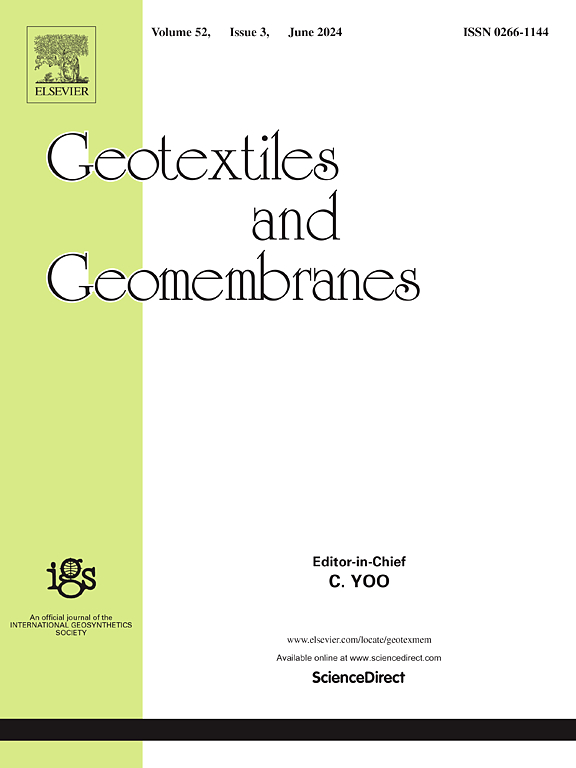土工布过滤器在循环流作用下的过滤特性及机理
IF 6.2
1区 工程技术
Q1 ENGINEERING, GEOLOGICAL
引用次数: 0
摘要
土工布过滤层广泛应用于河岸、防洪墙和水坝的护岸结构中。这些结构通常位于复杂的水力环境中,因此土工布过滤层可能会受到长期循环流动的影响。本研究基于自行研制的梯度比试验装置,进行了一系列不同水力梯度和法向应力下的梯度比试验,研究循环流作用下土工织物-土工织物体系的过滤特性及机理。结果表明:循环渗流作用下颗粒侵蚀风险大于系统堵塞风险,水力梯度大小和法向应力对过滤行为有重要影响。循环流动引起的边界冲刷效应与水力梯度成正比,而正应力通过良性土工布堵塞作用增强土体的截留力。目测分析表明,在循环流动作用下,滤料界面附近可形成稳定的拱状结构,从而提高了系统的机械稳定性。这些机制表明,在洪水易发环境下,策略性地调整覆盖层压力可以优化土-土工织物系统的结构稳定性。本文章由计算机程序翻译,如有差异,请以英文原文为准。
Filtration characteristics and mechanism of geotextile filters under cyclic flow
Geotextile filter layers are extensively utilized in revetment structures for riverbanks, floodwalls, and dams. These structures are often located in complex hydraulic environments, so geotextile filter layers may be subject to long-term cyclic flows. In this study, based on a self-developed gradient ratio test device, a series of gradient ratio tests under different hydraulic gradients and normal stresses were carried out to investigate the filtration characteristics and mechanisms of soil-geotextile systems under cyclic flow. The results show that the risk of particle erosion under cyclic flow is greater than the risk of system clogging, and the magnitude of hydraulic gradient and normal stress have an important influence on the filtration behavior. The boundary scour effect caused by the cyclic flow is proportional to the hydraulic gradient, while the normal stress enhances the retention of the soil through the benign geotextile blockage effect. The corresponding visual inspection analyses reveal that stable arching structures can be formed near the filter interface under cyclic flow, thus mechanically enhancing the stability of the system. These mechanisms suggest that strategic adjustments of the overburden pressure can optimize the structural stability of the soil-geotextile system in flood-prone environments.
求助全文
通过发布文献求助,成功后即可免费获取论文全文。
去求助
来源期刊

Geotextiles and Geomembranes
地学-地球科学综合
CiteScore
9.50
自引率
21.20%
发文量
111
审稿时长
59 days
期刊介绍:
The range of products and their applications has expanded rapidly over the last decade with geotextiles and geomembranes being specified world wide. This rapid growth is paralleled by a virtual explosion of technology. Current reference books and even manufacturers' sponsored publications tend to date very quickly and the need for a vehicle to bring together and discuss the growing body of technology now available has become evident.
Geotextiles and Geomembranes fills this need and provides a forum for the dissemination of information amongst research workers, designers, users and manufacturers. By providing a growing fund of information the journal increases general awareness, prompts further research and assists in the establishment of international codes and regulations.
 求助内容:
求助内容: 应助结果提醒方式:
应助结果提醒方式:


